I have to confess, I’ve never heard of anyone having a bad holiday in Italy! It’s a country with exceptionally friendly locals, beautiful scenery, incredible art and architecture, delicious food… the reasons to visit are endless and it definitely ticks all the boxes! But, we have a few top tips up our sleeve for anyone planning a trip to Italy, particularly for the first time. We’re sharing them with you to ensure that you can avoid the most commonly made pitfalls and to help you make the most out of your stay in this wonderful country. And, of course, these will also make sure you don’t get any unpleasant surprises once there! This is especially for first time visitors to Italy and is a collation of what our guests have told us that they wish they knew before travelling to Italy for the first time.
1. Always carry some cash with you
Whilst credit and debit cards are widely accepted in Italy, you’ll still come across some places that only accept cash. Or restaurants that claim that their card machine is broken (we’ve been to one restaurant whose card machine was broken for 3 Summers in a row!)
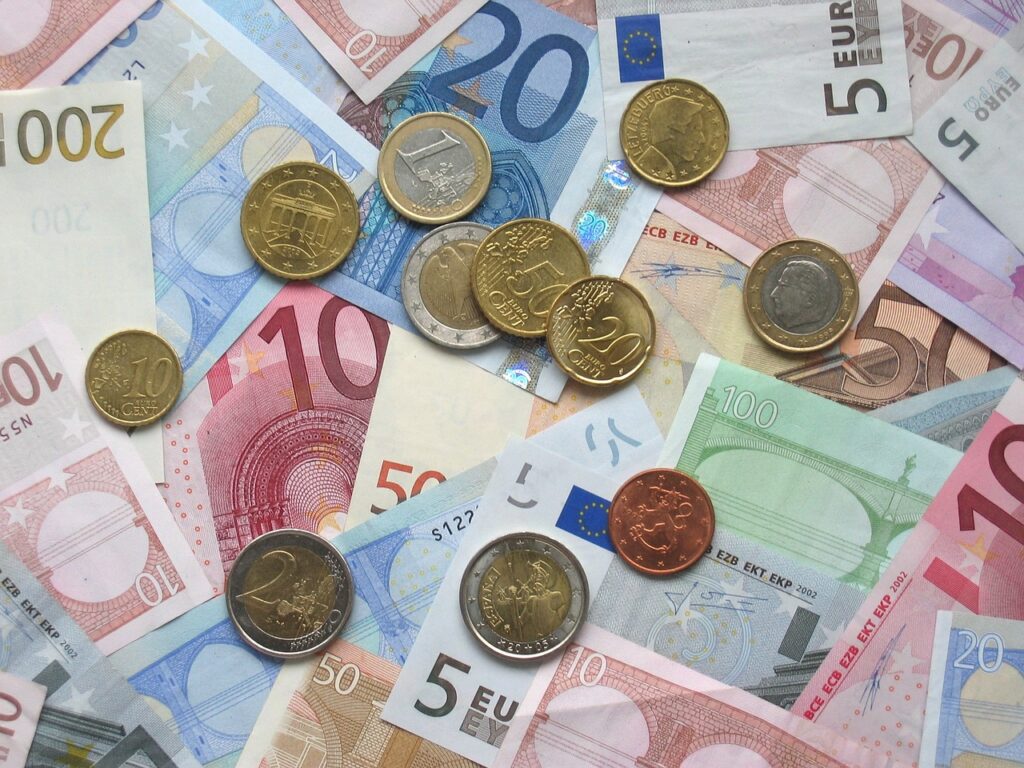
You’ll also find that some markets and stallholders may not accept card payments and we’d hate for you to miss out on being able to purchase some great souvenirs or items on your Italy trip. If you’re planning on travelling off the beaten track rather than sticking to the main tourist hot spots, then having some cash with you is also handy.
2. Book tickets in advance
Italy is popular and tourist attractions do get booked up. To avoid disappointment (and to avoid lengthy queues which eat up valuable sightseeing time) make sure you book your tickets in advance. Spending time getting organised ahead of your trip will make for a much more relaxing time when you’re actually in Italy and your planning will be time well spent. It will also ensure that you don’t miss out on any sights you’re dying to see. Some attractions can sell out months in advance such as The Last Supper in Milan. Book tickets in advance with Get Your Guide.
3. Dress appropriately
We actually think that it’s all too easy to get hung up about what to wear on holiday in Italy. Simply wear what you feel comfortable in and don’t worry about trying to blend in with the locals! However, the one piece of advice we would give is to remember that Italy is a religious country and home to numerous religious buildings. Most of these will have strict dress codes you need to adhere to before entering. Women, in particular, need to remember to ensure that their shoulders are covered and that skirts and shorts come to the knee. In exceptional cases, it is also necessary to wear close toed shoes. Admittance to churches and cathedrals may be forbidden otherwise.
4. Avoid the restaurant tourist traps
As a general rule, we suggest avoid those restaurants which have staff outside trying to lure you in or those which display a menu in English. They tend to be most prevalent around the main tourist hot spots, but in our experience, they sadly tend to offer the least variety and the lowest quality food at the most inflated prices. Instead, you’ll find much more authentic and higher quality food if you head off the beaten track slightly. Do your research and use sites such as TripAdvisor or ask your hotel or Italy villa rental hosts for recommendations and to find out where the locals eat.
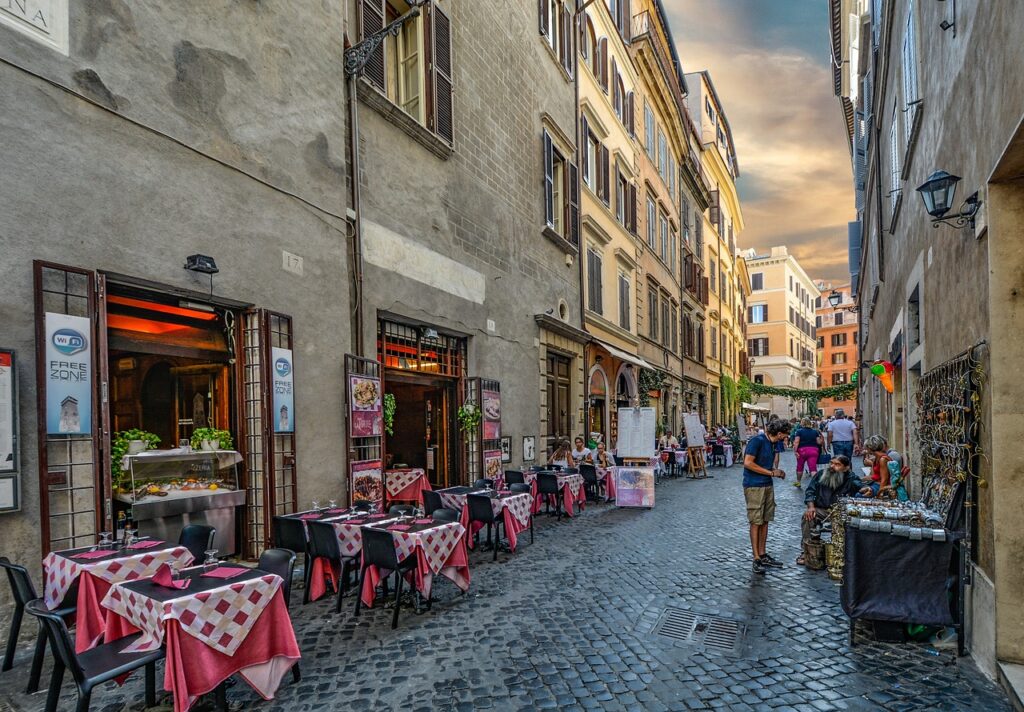
Also watch out for the ‘daily specials’. These aren’t always clearly priced so find out what you’re going to be charged before you order so that you avoid any unpleasant surprises on your bill at the end of your meal.
5. Validate your ticket
A piece of advice specifically for those intending to travel by train in Italy is to ensure you remember to validate your ticket before hopping on board. Once at the train station, look out for the green and yellow machines on the platform which is where you need to have your ticket stamped and dated. It’s easy to forget – there is little information displayed about this and it’s only mentioned in very small print in Italian on the back of the actual train ticket. But if you forget, you’re at risk of incurring a hefty on the spot fine from the controller on board (which are increased even further if you refuse to pay or dispute it). The same rules apply on the metro too.
That said, travelling by train is a great way to travel in Italy. Trains are pretty punctual as a rule and the high speed train network is an extremely efficient way to get from A to B!
6. Watch where you’re driving
This time, a piece of advice for those travelling by car. Many towns and cities in Italy now have ZTL zones. These are Zona a Traffico Limitato or Limited Traffic Zones. They are clearly signed and the sign will indicate the hours in which they are in operation. Often you can also spot them because there will be a security camera adjacent to them. Enter when you are not allowed to do so and, as with the trains, you’ll find yourself receiving a hefty fine, often once you’re back at home weeks after the trip itself.
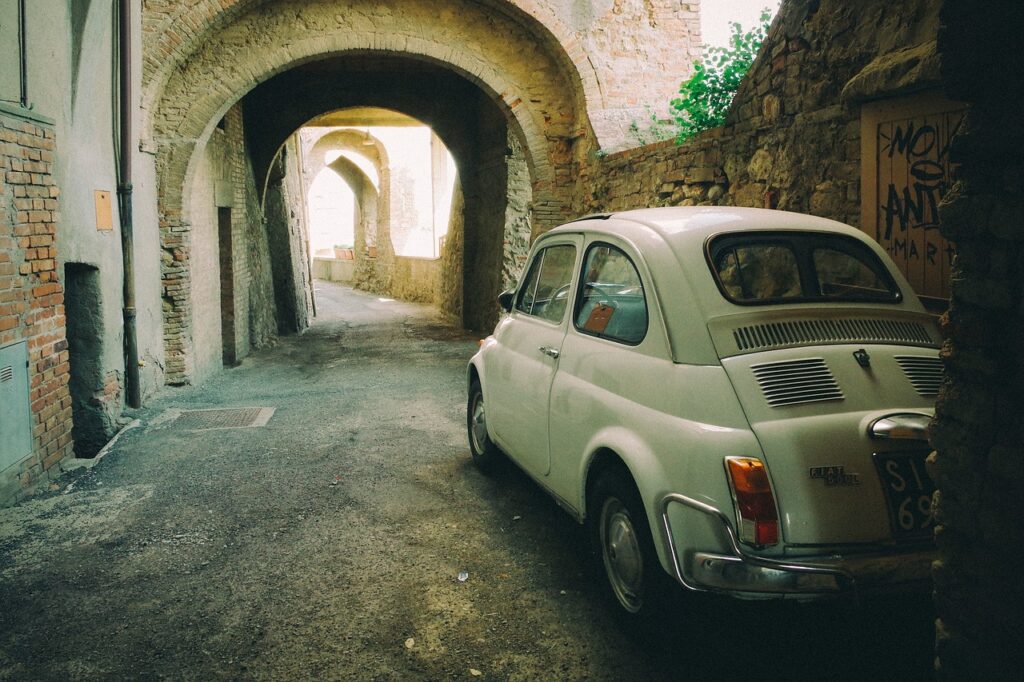
If you are staying in a hotel or Italian apartment rental within a ZTL, it may be that your car registration plate can be registered with the local authorities for the duration of your stay, allowing you to enter. When applicable, this is normally done free of charge. But definitely check before entering. Never assume that this is the case. And don’t assume that entry into one ZTL will allow you to access the entire city.
7. Download a map onto your smart phone
Getting lost in Italy is not as uncommon as you may expect. Smartphones don’t always work so we recommend downloading a map that you can access offline. This advice applies whether you’re navigating the narrow streets of Italy’s major cities or whether you’re exploring the more hidden side of Italy in its rural countryside.
8. Don’t expect to eat dinner early
Dinner times vary enormously from country to country. Certainly, from our experience, dinner in the USA tends to be much earlier than in Europe. Just be aware that dinner in Italy rarely starts before 7.30 and often starts from 8 pm onwards.
9. Do what the locals do
The culture in Italy may be very different from what you’re used to at home, but we recommend you embrace it. Take breakfast. In Italy, this tends to be enjoyed at a bar or cafe and consists of a coffee and a sweet pastry. Be aware that prices will be cheaper if you enjoy it standing at the bar like the Italians rather than sitting at a table.
10. Make a note of public holidays
Italy has 12 public holidays each year along with one additional one per region. Be prepared for shops and businesses to close completely on these days, particularly on 15 August which marks Ferragosto. Most museums and tourist attractions will stay open since it falls within the height of the tourist season but don’t expect all shops or supermarkets to be open.
11. Try and pack light
Arguably, this is a piece of advice that applies equally well wherever you are travelling to in the world. However, Italy is a country with more than its fair share of narrow, cobbled streets and more than its fair share of steps!
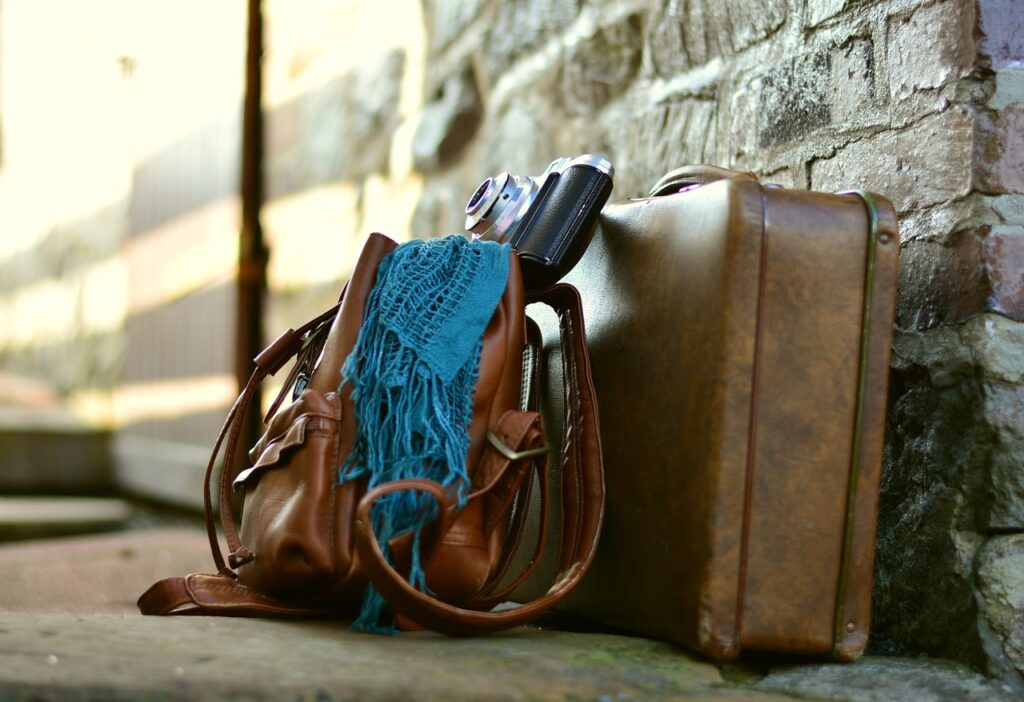
Trust me – you’ll be grateful for a smaller case when you’re navigating your way to your hotel! Oh… and, of course, make sure you pack to leave enough space to bring back some souvenirs too!
12. Be prepared for the public toilets!
Italian public toilets as well as those in cafes and bars tend to have rather a unique feature – they tend to be often missing a seat! After asking a surprising number of questions on my travels as to why this is, the most common answer seems to be that they all had them at one time but, once broken, they haven’t been replaced. And the reason they seem to break more than in other countries…? Well, it seems to be that people stand on them more frequently since they weren’t clean enough to sit on in the first place! Whatever the reason, it does mean Italian public toilets don’t always appear that great, and they’re not always kept that clean either. Don’t assume soap will be regularly topped up so carry some hand sanitiser with you if you can just in case!
Some public restrooms also charge a small fee so it’s handy to have a few euros to carry around with you so you don’t get caught short!
13. Invest in guides and experiences
Booking a guide in Italy can be a great way of also making sure you skip the queues into attractions. But you can’t underestimate the wealth of knowledge a guide has and the enjoyment that you can get from booking a tour or experience. There is no better way of immersing yourself in a country than by interacting with the locals and a guide is a perfect way to do this. Whether you opt for a cookery class in Italy, a guided tour or another experience, it’s a magical way to bring Italy to life even more.
14. Try and learn some basic Italian before you go
I always think that, whatever country you’re visiting, it’s nice to at least try to learn some of the language before you go, even if it’s just a few stock phrases to use in a restaurant. Whilst the majority of Italians can speak English, it’s so much more polite to try and converse in Italian. Even if you just ask if they can speak English instead of making the assumption that they can, you’ll find you’ll get a much warmer response in return. Have a few basic Italian phrases up your sleeve and you’ll receive an even warmer welcome in Italy.
15. Don’t expect shops to open all day
Whilst some supermarkets in the north of Italy now even open 7 days a week and 24 hours a day, travel in the south of Italy and it’s much more common to find shops shut between one and four o’clock in the afternoon. This is the Italian riposo, equivalent to the siesta in Spain. It’s a time when Italians will shut up shop, head home and enjoy lunch and the company of friends and family before heading back to work later on. With Summer temperatures pretty stifling in towns and cities in Southern Italy in the daytime, shopping is far more pleasant in the evening anyway! So embrace the custom and enjoy a riposo yourself!
16. Be aware of the coperto
The coperto is a cover charge applied by restaurants. It’s usually no more than a couple of euros per person and applies to anyone eating at the restaurant, not just tourists. It’s definitely not a scam! Typically, this will cover the cost of bread and oil served at the start of the meal. However, you will be charged the coperto whether you eat it or not so we recommend you tuck in! Italians don’t expect a tip on top of this so in this respect it’s a far more straightforward system than you get in the USA or even the UK now. That said, we still think it’s nice to leave an extra tip if you have received good service, especially as the coperto is usually a fraction of the tip you’d expect to leave in other countries.
17. Beware of pickpockets
Not once have I ever felt unsafe in Italy, and not once have I ever been pickpocketed. That said, as in any large city, there will always be people who try to take advantage. A recent survey put Barcelona and Paris as the worst cities in Europe for pickpockets but Rome came in third. Pay particular attention around crowded tourist hotspots such as the Trevi Fountain or the Colosseum. Funnily enough, you can be particularly vulnerable when stood in queues which is yet another reason to plan in advance and book skip the line tickets.
18. Enjoy authentic Italian food
Probably most applicable to American travellers, be aware that Italian food you’re used to eating in the USA is perhaps not as authentic as you had assumed! Italian dishes often bear no resemblance to what you’re used to back home! Each region in Italy has its own regional specialities too. We recommend you make sure you opt for those wherever you are. So it may be pizza in Naples, carbonara in Rome, risotto in Milan….
19. Expect to show your passport at check in
By law, guests staying at both hotels and self catering accommodation are legally required to be registered with the local authorities so don’t be surprised if you are asked for a copy of your passport or photo ID either prior to arrival or when you check in. Trust me – many hosts would rather not have to deal with all the paperwork but it’s a legal requirement that all hosts should follow if they’re sticking to the rules and regulations.
20. Wear sensible shoes
You’ll find you’ll be walking a lot in Italy. Many streets are old and uneven so bring sensible shoes.
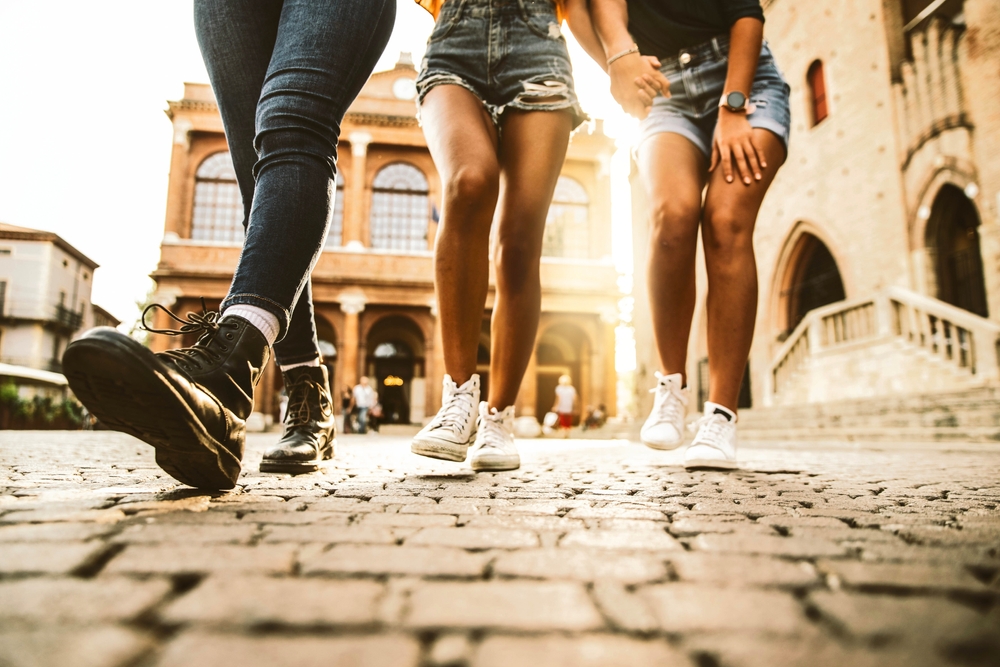
Ditch the flip flops and heels and opt for something more comfortable in our opinion!
21. Go green
We’ve always found Italy to be ahead of the game when it comes to its eco credentials. Supermarkets in Italy charged for plastic bags way ahead of the UK. Bring your own when heading to the supermarket to both save money and look after the environment. In the same vein, bring a reusable water bottle with you when sightseeing in Italy. There are plenty of public drinking fountains where you can access clean fresh drinking water. For perspective, Rome has around 2500 of them!
22. Book your car rental as soon as possible
If you’re planning to hire a car in Italy, book well in advance. Car rental prices only ever increase nearer the time of your stay. You’ll save so much money by booking early. Oh… and be prepared for some streets in Italy to be extremely narrow. So don’t hire a bigger car than you need!
23. Pack the mosquito repellent
Whilst this won’t apply on every trip and will depend on when and where you are visiting, we do recommend packing some mosquito repellent, particularly if travelling during the Summer months and to a more rural location in Italy.

Using repellent will ensure you’re not covered in red itchy bites during your Italy trip!
24. Make note of the local tourist taxes
Another thing holidaymakers often get caught out by (or forget about) are the local tourist taxes. Like the coperto, these aren’t a scam but a local charge imposed by the authorities. They apply to all accommodation options from hotels to B&Bs to self catering villas and apartments. They don’t tend to be much, ranging from 1 euro per person per night up to 7 euros. Many places will need to collect it in cash so have some money to hand on arrival.
25. Avoid parking fines
Parking can be confusing in Italy, especially if your Italian isn’t quite up to understanding the road signs. But, as a general rule, if parking on the road, white bays are free to park in. Yellow bays are resident parking only and require a permit. Visitors can park in the blue bays but you must pay to park at the nearest parking meter.
